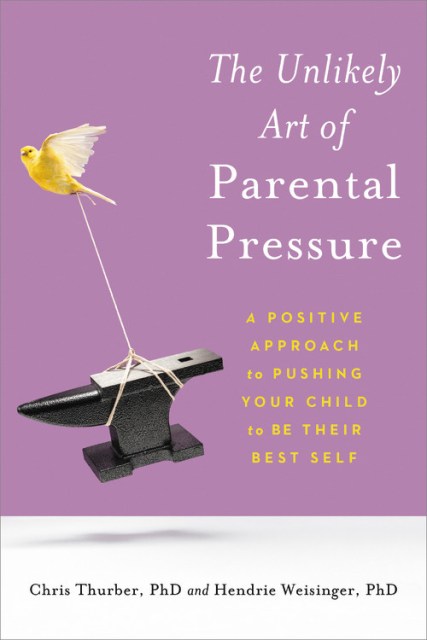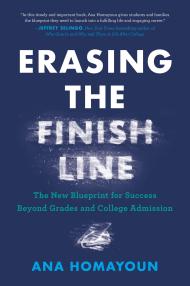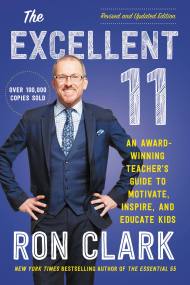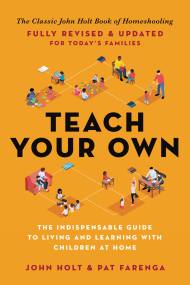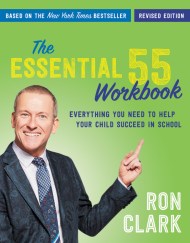Promotion
Use code MOM24 for 20% off site wide + free shipping over $45
The Unlikely Art of Parental Pressure
A Positive Approach to Pushing Your Child to Be Their Best Self
Contributors
By Hendrie Weisinger, PhD
Formats and Prices
Price
$17.99Price
$22.99 CADFormat
Format:
- Trade Paperback $17.99 $22.99 CAD
- ebook $2.99 $3.99 CAD
- Audiobook Download (Unabridged) $24.99
This item is a preorder. Your payment method will be charged immediately, and the product is expected to ship on or around July 20, 2021. This date is subject to change due to shipping delays beyond our control.
Also available from:
The Right Kind of Parental Pressure Puts Kids on a Path to Success. The Wrong Kind Can Be Disastrous.
Level up your parenting with this positive approach to pushing your child to be their best self.
Parents instinctively push their kids to succeed. Yet well-meaning parents can put soul-crushing pressure on kids, leading to under-performance and serious mental health problems instead of social, emotional, and academic success. So where are they going astray? According to Drs. Chris Thurber and Hendrie Weisinger, it all comes down to asking the right question. Instead of “How much pressure?”, you should be thinking “How do I apply pressure?”
The Unlikely Art of Parental Pressure addresses the biggest parenting dilemma of all time: how to push kids to succeed and find happiness in a challenging world without pushing them too far. The solution lies in Thurber and Weisinger’s eight methods for transforming harmful pressure to healthy pressure.
Each transformation is enlivened by case studies, grounded in research, and fueled by practical strategies that you can start using right away. By upending conventional wisdom, Thurber and Weisinger provide you with the revolutionary guide you need to nurture motivation, improve your interactions with your child, build deep connections, sidestep cultural pitfalls, and, ultimately, help your kids become their best selves.
Genre:
-
"The Unlikely Art of Parental Pressure is the rare parenting book that respects both parents and children. Instead of simply applauding parental pressure as the key to success or dismissing it as cruel and ineffective, Thurber and Weisinger walk their readers through the theory and practice of parenting happy, successful children. A tour de force."Abby Freireich and Brian Platzer, education columnists for The Atlantic and the authors of Taking the Stress out of Homework
-
"An interesting perspective on parental pressure that will be compelling to parents interested in the intersection of a child's academic success and emotional health."Library Journal
-
“The Unlikely Art of Parental Pressure beautifully illuminates and addresses the delicate dance that parents are faced with on a daily basis.”Chad Beguelin, playwright & lyricist of The Prom
-
"Parental Pressure is often detrimental to a child’s desire to participate in sports. This book provides parent the tools to transform parental pressure into a positive force that will encourage your child to follow their passion and perform their best, be it on the soccer field or school field.”Gregg Berhalter, head coach, U.S. Men’s National Soccer Team
-
“All parents worry that they are pushing their children too much...or not enough. Two sophisticated psychologists, Drs. Thurber and Weisinger, tackle this problem head-on in The Unlikely Art of Parental Pressure. With up-to-date science, great wisdom, and readable case examples, they show parents the right way to support their children. If you have ever worried that you are the dreaded ‘pushy parent,’ you should read this book. Your children will thank you.”Michael G. Thompson, PhD, bestselling author of Raising Cain and Best Friends; Worst Enemies
-
"There is an 'art' to parental pressure and Drs. Thurber and Weisinger give you the brushstrokes and tools you need to become a master at healthy prodding that supports children and avoids harmful results or pushback. One of the most helpful parenting books of the last decade."Susan Newman, PhD, social psychologist and author of Little Things Long Remembered: Making Your Children Feel Special Every Day.
-
“Based on their decades of experience, Drs. Thurber and Weisinger have illuminated a new pathway to student success by demystifying the difference between healthy and harmful parental pressure. The Unlikely Art of Parental Pressure invites readers to a conversation about parenting that can improve the lives of parents and children, as they both strive to be their best.”Tyler Chapman Tingley, EdD, 13th principal of Phillips Exeter Academy, 1st co-head, Avenues: The World School
-
"How do we push children without pressuring them in unhealthy ways? How might we support without being too lenient? Amid the onslaught of unsolicited, unscientific, and often conflicting advice, parents feel confused in answering these questions. Enter the warm and humorous advice of Drs. Thurber and Weisinger. By the end of the book, you'll have absorbed the parental trifecta: compassion, clarity, and scientifically-backed guidance to transform unhealthy pressure into wise parenting."Yael Schonbrun, PhD, Assistant Professor Brown University and cohost of the Psychologists Off the Clock Podcast
-
"An empowering guide to helping children succeed."Publishers Weekly
-
"Drs. Thurber and Weisinger's work teaches parents how to transform unhealthy parental pressure into a guiding force that will help any child navigate their life more effectively and in the process, boost the quality of the parent-child relationship."Gilda Ross, student and community projects coordinator, GlenBard Parent Series
-
"No one goes to school to be a parent hence the African saying that 'it takes a village to raise a child.' This book is timely during this pandemic where many children are casualties of Covid-19. Reading the book reminded me that, children are essential for the survival of our species—a sober reminder for those in schools where the focus is raising children in partnership with parents and guardians."Temba Maqubela, Headmaster at Groton School
-
"When our first child was born in 1994, the doctor announced his Apgar score, and my husband—a clinical psychologist—quipped, 'The first of many standardized scores he and we will receive over his lifetime.' Although an Apgar score simply measures the effects of obstetric anesthesia on babies, we could not help but take pride (and some credit) for his strong score.Katherine G. Windsor, EdD,, head of Miss Porter’s School, instructor, University of Pennsylvania Graduate School of Education
I realize now, as a professional educator, that all parents inexplicably focus on every performance marker, and I have a new appreciation for how this influences our parenting styles, the goals we set for our children, and the pressure they feel.
Drs. Thurber and Weisinger do a masterful job of deconstructing the art and science of parenting by centering the child and providing a framework for parents to be intentional and reflective as they navigate the challenges and opportunities of parenting. The Unlikely Art of Parental Pressure is a must-read that we certainly could have used in 1994!" -
"This is a great resource for any parent who wants to know how to push their kids to do their best without placing their children under toxic pressure"Amy Morin, author of 13 Things Mentally Strong Parents Don't Do and 13 Things Strong Kids Do
-
"The Unlikely Art of Parental Pressure is a timely, insightful, exploration of a challenge that all parents face as they help navigate their children's journey toward success. The book provide a broad and deep examination of issues that parents will immediately resonate with and offers practical solutions that parents can actually use with themselves and their children."Jim Taylor, PhD, author of Positive Pushing: How to Raise a Successful and Happy Child
-
“With a keen eye to the never easy dynamics of parenting kids with potential, Thurber and Weisinger show a better way to avoid the paradox of harming our kids when all we really want is to make their lives easier than our own.”Michael Ungar, PhD, director, Resilience Research Centre, Dalhousie University; author, Change Your World: The Science of Resilience and the True Path to Success
-
"Like the ghost of Christmas Past, Present, and Future, Thurber and Weisinger guide you behind the scenes to give you a panoramic view of the effects parental pressure can have on our children. While reading this book, you may also uncover the residual footprint your own parents parenting style has had on your life. Thurber and Weisinger enlighten and education, teaching us how to reframe how to convey our positive intentions in a way that fosters a healthy and supportive space for our children to thrive."Brittney-Nichole Connor-Savarda, founder, Catalyst 4 Change; Generation EQ
- On Sale
- Jul 20, 2021
- Page Count
- 272 pages
- Publisher
- Hachette Go
- ISBN-13
- 9780306874772
Newsletter Signup
By clicking ‘Sign Up,’ I acknowledge that I have read and agree to Hachette Book Group’s Privacy Policy and Terms of Use
